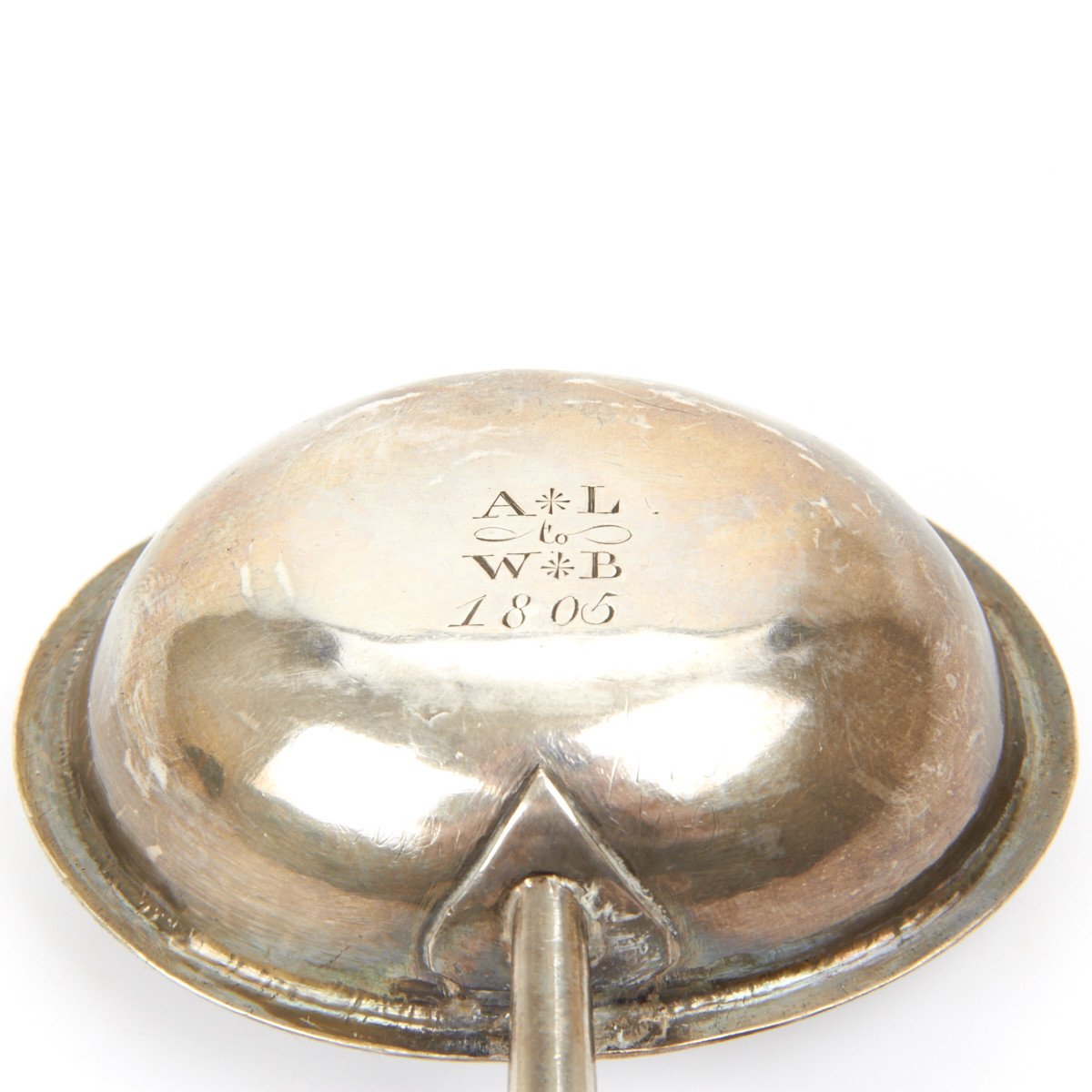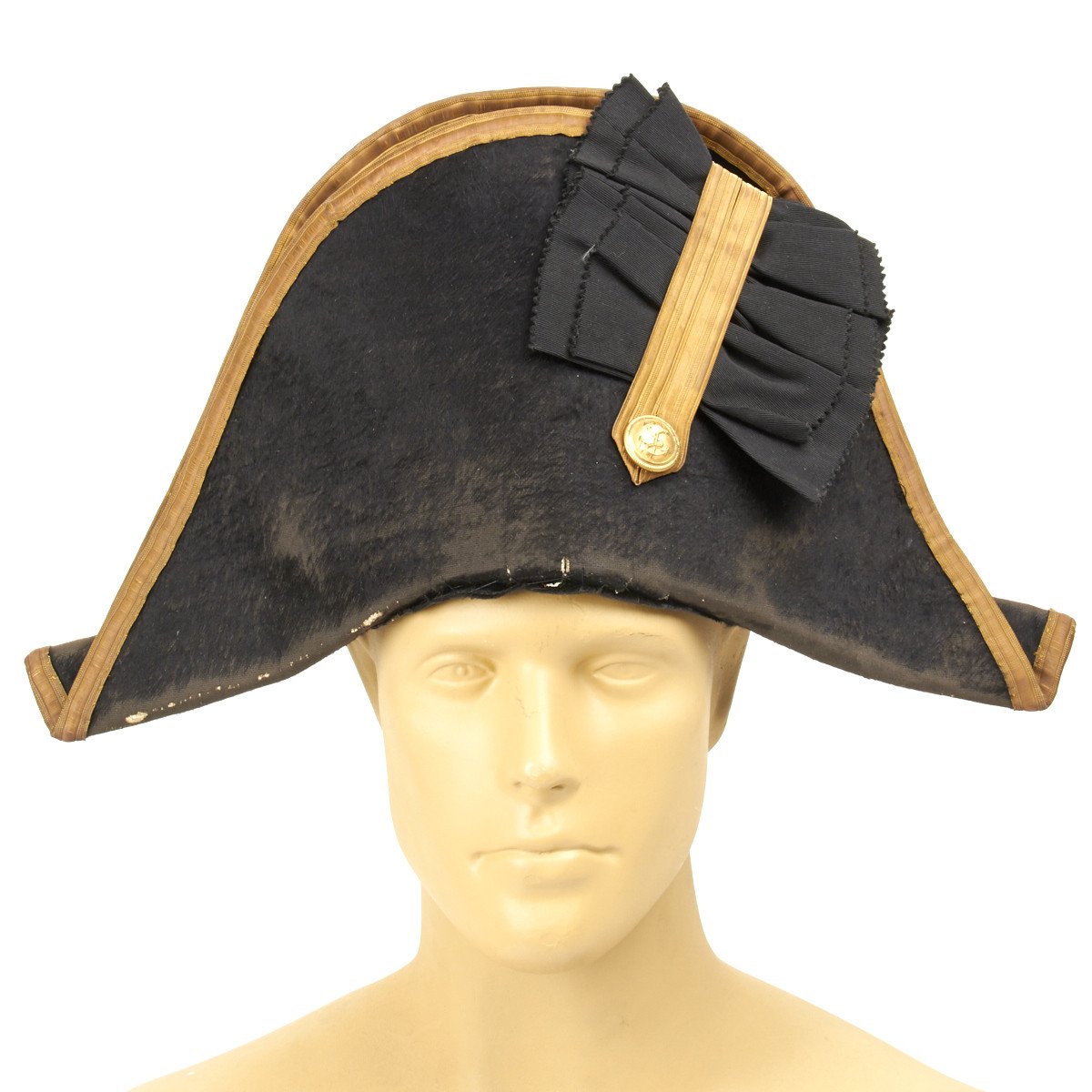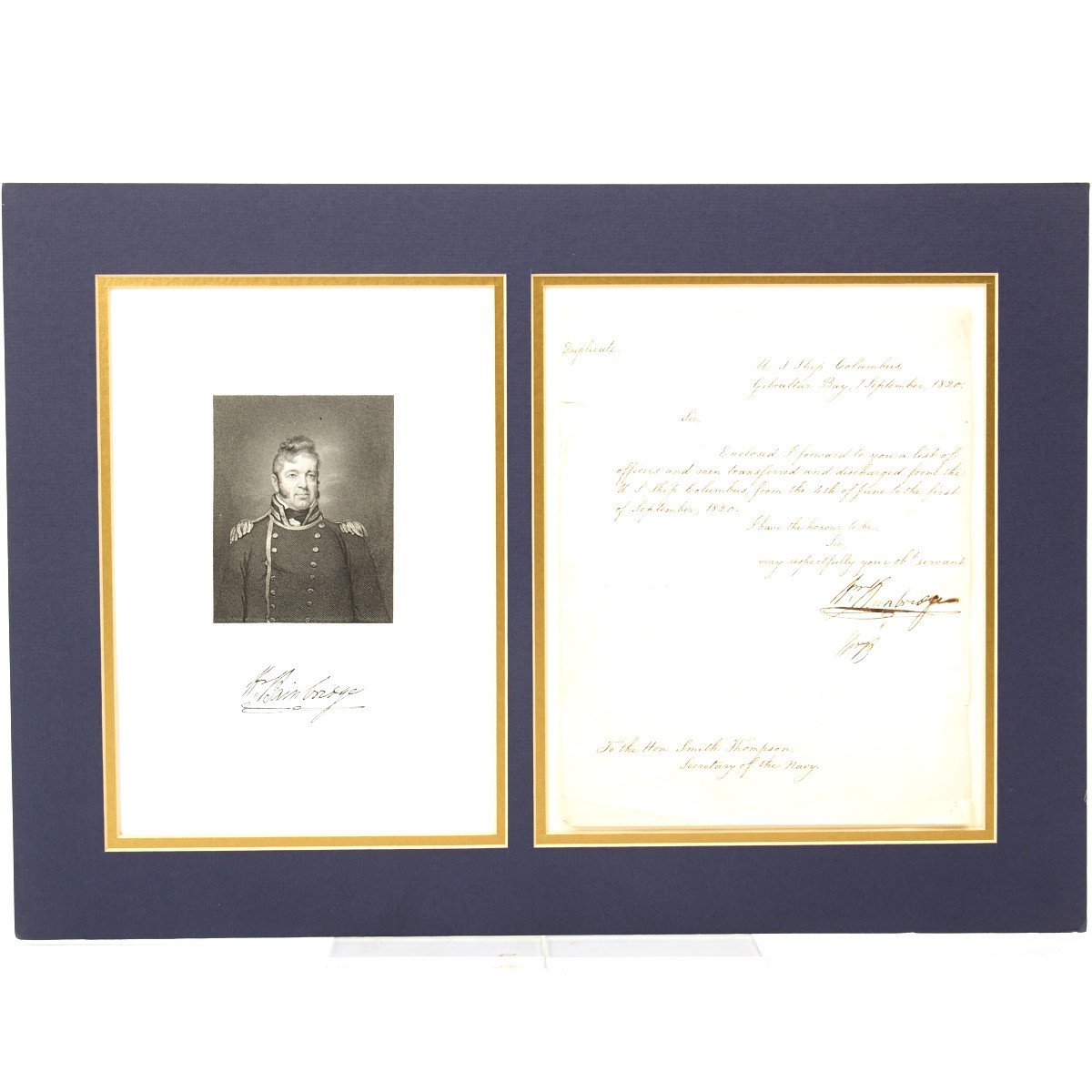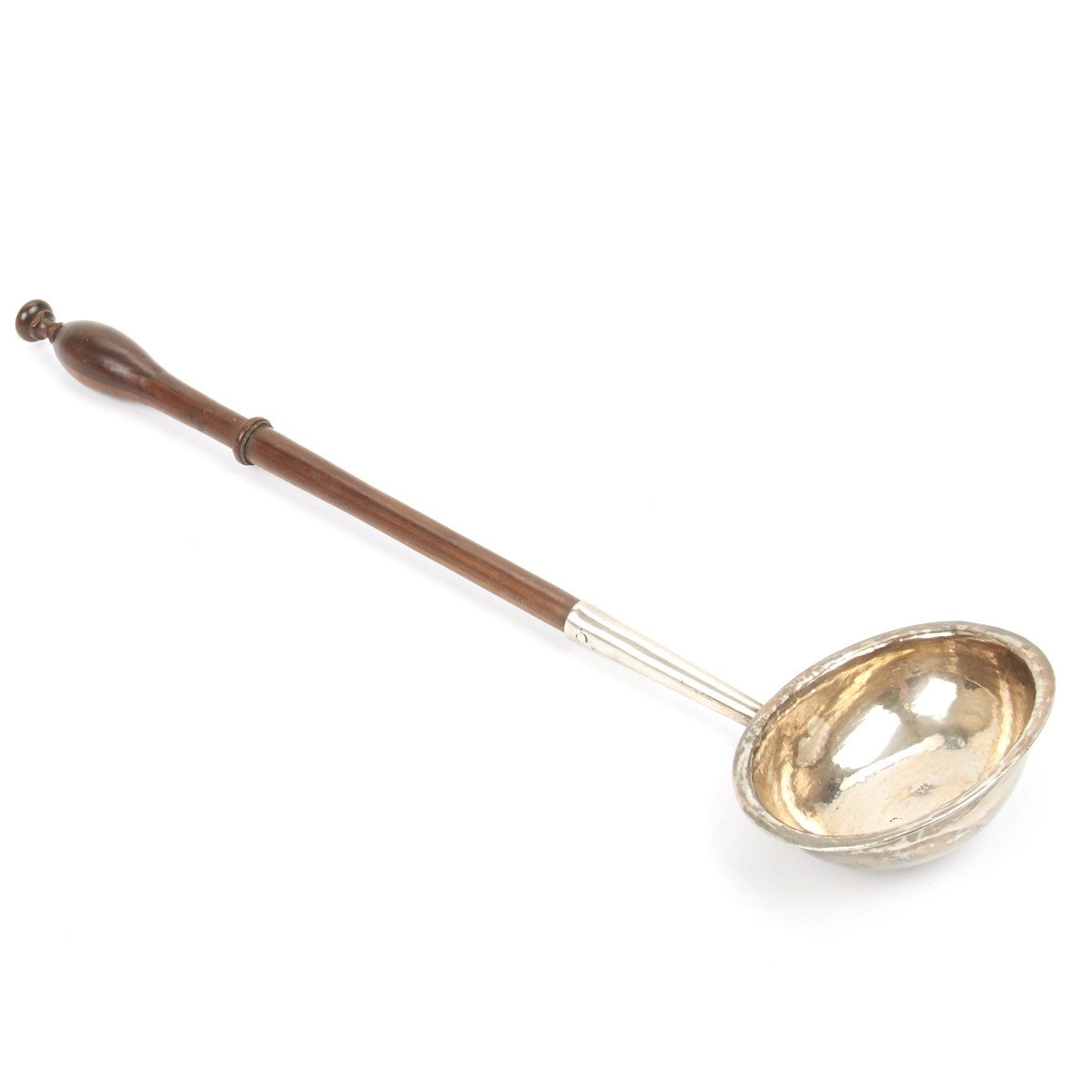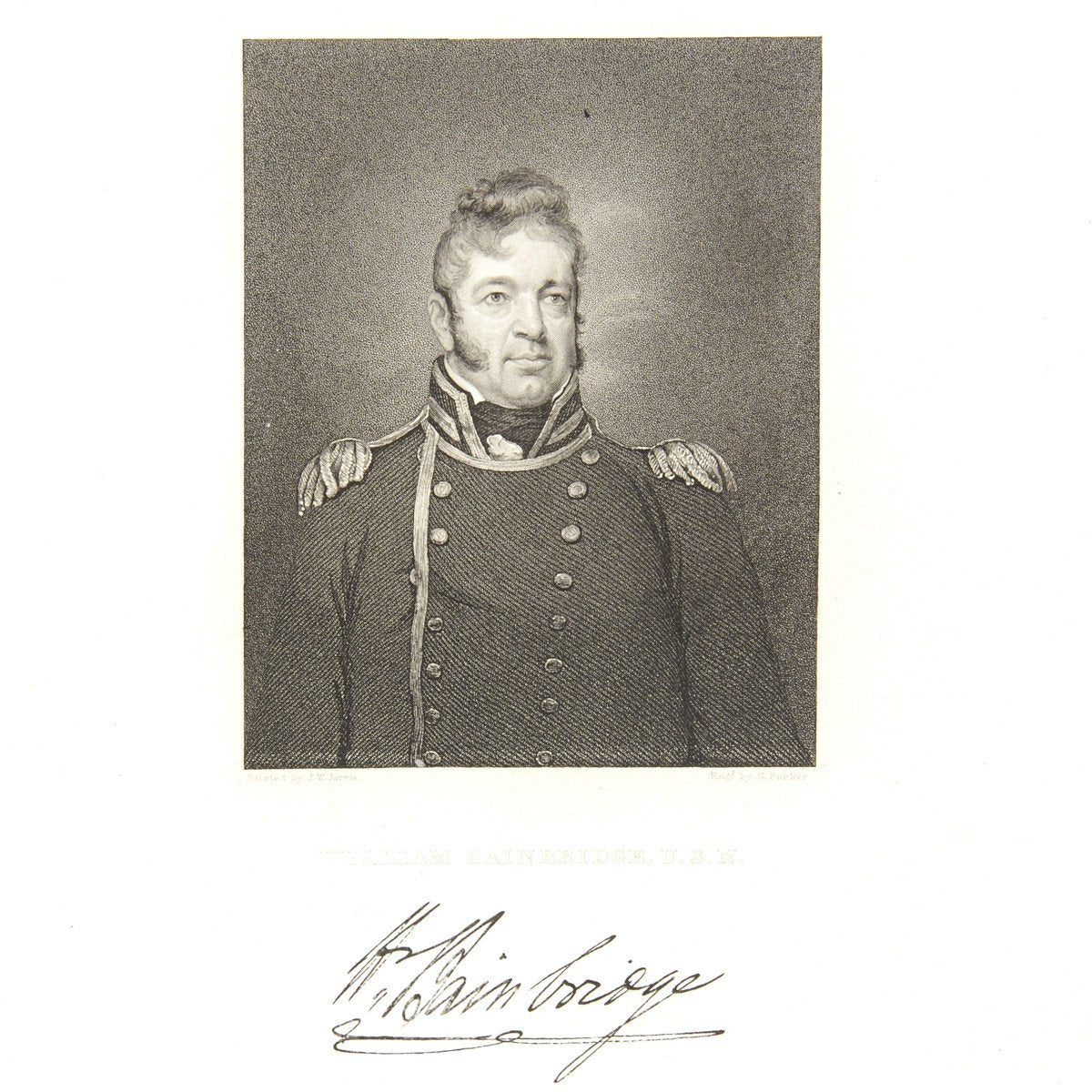Original Collection from the Commodore of U.S. Navy William Bainbridge 1774-1833 Original Items
$ 4.495,00 $ 1.123,75
Original Items: One-of-a-kind set.
The big problem with provenance is proving it, as family hearsay only gets one so far. Here is a classic example; this is a small collection of items purportedly from the American naval commodore William Bainbridge who received the Congressional Gold Medal from President Madison. William Bainbridge entered the U.S. Navy in 1798 with the formation of the new nation’s Navy. He had served in merchant vessels since 1792 initially on the ship Cantor.
In 1796 on the ship Hope armed with just four nine pound guns he was made commander and later that year whilst at the island of St. John in the Caribbean he was hailed by an English Schooner and ordered to stop. When Bainbridge refused the British Schooner opened fire. Immediately Bainbridge turned and with only two guns facing his opponent retaliated forcing the Schooner to strike it’s colors. His Naval future was established.
In 1803 he was sent to Tripoli to enforce the blockade of the Barbary Pirates on the
USS Philadelphia. Unfortunately the vessel ran aground whilst under the guns of the shore batteries. Fearing for the lives of his crew Bainbridge surrendered but before doing so he destroyed all his munitions and codebooks.
He and his crew were held captive for nineteen months in appalling conditions. They were eventually rescued in June 1805 and Bainbridge returned to the United States a hero for saving the lives of his crew and disabling his vessel.
He saw considerable service in the war of 1812 commanding the USS Constitution. On 29 December 1812, Bainbridge fell in with the 38-gun HMS Java, off the coast of Brazil. The Java was a vessel of 1,083 tons, formerly the French frigate Renommée. She had a crew of 400 men under Captain Henry Lambert and was on her way to the East Indies, carrying the newly appointed Lieutenant-General Hislop of Bombay and his staff along with dispatches to St. Helena, Cape of Good Hope and every British port in the Indian and China Seas. In addition to her crew, Java was carrying more than four hundred officers and seamen who were to join the British fleet in the East Indies, among them Captain John Marshall who was to take command of a sloop of war stationed there. Under Bainbridge, the Constitution had a crack crew who were well drilled in gunnery; the crew of the Java was not. The Java was virtually cut to pieces, with its rigging almost completely destroyed, and was forced to surrender, while having inflicted little damage to the Constitution, other than removing Constitution’s helm with a lucky shot. During the action, Bainbridge was wounded twice, but maintained command throughout; even replacing the missing helm on the Constitution with the one from the Java before she was destroyed and sank. To this day, the still-commissioned Constitution (anchored in Boston Harbor) sports the helm that Bainbridge salvaged from the Java. Java’s crew was taken prisoner and put aboard the Constitution in the hold. Because of the heavy damage inflicted on Java and the great distance from the American coast, Bainbridge decided to burn and sink the British frigate. On March 3, 1813, President Madison presented Bainbridge with the Congressional Gold Medal for his service aboard the Constitution.
This small collection is impressive and consists of the following pieces-
Handwritten letter from Bainbridge’s own files marked “duplicate” dated the 1st of September, 1820 aboard the USS Columbus to the Secretary of the Navy. Handwritten by a subordinate but signed by William Bainbridge himself.
Beaver pelt U.S. Naval officer bicorn hat supposedly owned by Bainbridge. Exactly the style that was used by an American Naval officer circa 1800, very nice but the beaver pelt shows some wear, absolutely original, but with unknown provenance.
British hallmarked silver punch ladle as used in the Naval officer’s mess with turned wood handle, the underside of the bowl engraved: A.L. to W.B. 1805. Apparently presented to Bainbridge by a U.S. Naval Officer, Augustus Ludlow with whom Bainbridge had served on U.S.S. Essex in 1801 and who again Bainbridge encountered serving on the U.S.S. President the vessel that transported Bainbridge back to the United States after his release from captivity in 1805, clearly a token of great esteem between two officers.
Finally, and best of all, an original oil painting with brass plaque engraved- THE ENGAGEMENT BETWEEN H.M.S. JAVA under CAPTAIN JAMES LAWRENCE and the U.S.S. CONSTITUTION under CAPTAIN WILLIAM BAINBRIDGE off the BRAZILIAN COAST on December 29th, 1812. Painted by Paul Jean Clays, 1819 -1900. Paul Jean Clays was a renowned marine artist from Bruges, Belgium. Painting canvas measures 24″ x 21″, outside of frame measures 30″ x 27″.
Fast Shipping with Professional Packaging
Thanks to our longstanding association with UPS FedEx DHL, and other major international carriers, we are able to provide a range of shipping options. Our warehouse staff is expertly trained and will wrap your products according to our exact and precise specifications. Prior to shipping, your goods will be thoroughly examined and securely secured. We ship to thousands clients each day across multiple countries. This shows how we're dedicated to be the largest retailer on the internet. Warehouses and distribution centres can be located throughout Europe as well as the USA.
Note: Orders with more than one item will be assigned a processing date depending on the item.
Before shipping before shipping, we'll conduct a thorough inspection of the items you have ordered. Today, the majority of orders will be delivered within 48 hours. The delivery time will be between 3-7 days.
Returns
The stock is dynamic and we cannot completely manage it because multiple stakeholders are involved, including our factory and warehouse. So the actual stock may alter at any time. It's possible that you may not receive your order once the order has been made.
Our policy is valid for a period of 30 days. If you don't receive the product within 30 days, we are not able to issue a refund or an exchange.
You can only return an item if it is unused and in the same state as the day you received it. You must have the item in its original packaging.
Related products
Uncategorized
Uncategorized
Uncategorized
Uncategorized
Uncategorized
Uncategorized
Uncategorized
Uncategorized
Uncategorized
Uncategorized
Uncategorized
Angolan Rebel 1970s era 60mm Inert Display Mortar from Angolan Civil War Original Items
Uncategorized
Uncategorized
Armoured Fighting Vehicles of the World: AFVs of World War One (Hardcover Book) New Made Items
Uncategorized
Uncategorized
Uncategorized
Australian WWII Owen MK1 Machine Carbine SMG Custom Fabricated Replica with Sling Original Items
Uncategorized
Uncategorized
Uncategorized

